Siderian Period
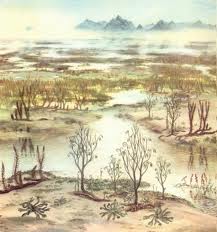 The Siderian Period
The Siderian Period
Orosirian Period
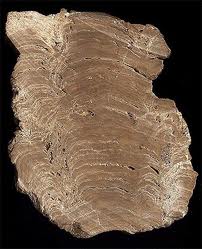 The Orosirian Period
The Orosirian Period
Rhyacian Period
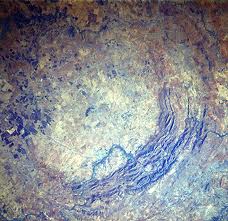 The Rhyacian Period
The Rhyacian Period
Statherian Period
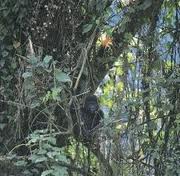 The Statherian Period
The Statherian Period
Proterozoic Era
This is the era of many interesting events in the earth's history and there was many changes and developments of the Earth. Unlike the other ancient eras, the Proterozoic Era contains good evidence of fossils which were mainly from archaeans and bacteria. This evidence is the proof that living organisms were in abundance in this era. The Era lasted from 2.5 billion years to 543 million years ago. Two major living organisms in existence of eukaryotic cells. At the mid of the Proterozoic Era there was an increase in the atmospheric oxygen. This improved the level of oxygen in the air and caused a catastrophe for the bacteria but also helped eukaryotic cells to grow profusely. Multicellular algae are included in this group and finally the first animals appeared at the end period of the Proterozoic Era.
Division of the Proterozoic Era
This era is divided into 4 major periods and each of these periods had special features which contributed to understand the Proterozoic Era. The four divisions of the Proterozoic Era are the Siderian Period, the Rhyacian Period, the Orosirian Period, and the Statherian Period.
Stratigraphy of the Proterozoic Era
As stated above, there was in an increase in the level of oxygen in the atmosphere. It is surprising to know that the Earth was hit by a pollution crisis for the first time in this era. Evidences of increased level of atmospheric oxygen in this era were much like the red beds which contain metal oxides, fossil soils. These red beds contained iron oxides as well. According to the researchers, the levels of oxygen was less than the present level by 1% at the time archaean but this level increased to 15% about 1.8 billion years ago. Still today the level is continuing to rise.
It is really strange and contradictory to define rising of oxygen as a pollution crisis. The cause of degradation of different organic compounds and contradictory is because oxygen is the major requirement of our lives and at the same time, it is the cause of destruction of some other life forms. Even today, oxygen is used to kill several protists and bacteria. It is also interesting to know that to render oxygen harmless, the organisms had to undergo several biochemical methods like oxidative respiration. This method has the benefit to produce a large amount of energy for cells such as eukaryote.
Life during the Proterozoic Era
Proterozoic Era is the time of the stramolites. This bacteria continued to grow profusely throughout the Proterozoic Era and contributed richly for scientists to understand the Proterozoic life more realistically. The bacteria transformed into a kind of rock called stromatolitic chert. They were the exclusive microfossils of their microbes and have been preserved.
Decline of Stramolites
Stramolites started declining before 700 million years and finally reigning in the Proterozoic Era. A common theory states that their mass destruction was due to the herbivorous eukaryotes. Herbivorous eukaryotes evolved during this time and mainly fed on growing stramolites. They now are counted in rare fossils but they can be found in restricted habitats of saline and shallow water such as Shark Bay of Australia.
The fossils of Proterozoic Era also include a type of macroscopic organism which was believed to exist before 2.1billion years.
These organisms were like circles, leaves, ribboned, with dark compressions. they grew profusely in the Neoproterozoic. Some of these organisms also resemble seaweeds represented in eukaryotic algae. It has been proved with evidence that green algae and reec algae did appear before 1 billion years ago approximately, which is the time of the Proterozoic era.
Localities in the Proterozoic era
The possible localities of the Proterozoic era include White Sea, Nopah Range, Mistaken Point in Newfoundland, Ediacara Hills, and Bitter Springs Formation. Each of these places have major contributions in understanding the Proterozoic era.
Bitter Springs Formation: Fossils of eukaryotic cells are known be discovered in Central Australia.
Ediacara Hills - This site is known as the fossil bed of some the oldest known animals. These fossils were discovered in 1946, in this locality of Australia.
Mistaken Point, Newfoundland - Some of the mysterious fossils of the Proterozoic era were discovered in the coast of Newfoundland.
Nopah Range: This region of Southern California is known for the oldest sedimentary rocks, which date back to 1.5 billion years ago. The rocks are rich with the deposits of stromatolites.
White Sea: This site is an active research center to find some of Vendian fauna.
Geology of the Proterozoic era
This is also the era of significant geological changes. It is in this era that continents began to widen. The stable continents shelved and moved through the processes of plate tectonic. Erosion and deposition rapidly proceeded over those continents which were then devoid of a vast quantity of plants. Thick beds of sandstone and pure quartz began to form rapidly as well. Formation of the banded iron beds started in the Archean era and continued throughout the Proterozoic Era. An interesting fact about these formations is that they were consisted of alternating layers of iron and quartz and are considered as the prime sources of iron in the world. These types of banded formations did not take place after the Proterozoic Era.
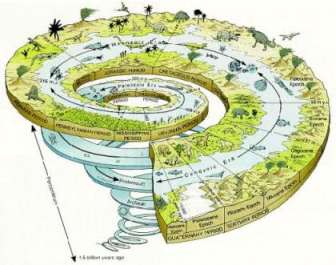
Index
Extinct Profiles
 Triassic Dinosaurs
Triassic Dinosaurs Jurassic Dinosaurs
Jurassic Dinosaurs Cretaceous Dinosaurs
Cretaceous Dinosaurs Pterosaurs
Pterosaurs Marine Reptiles
Marine Reptiles Dinosaur Extinction
Dinosaur Extinction